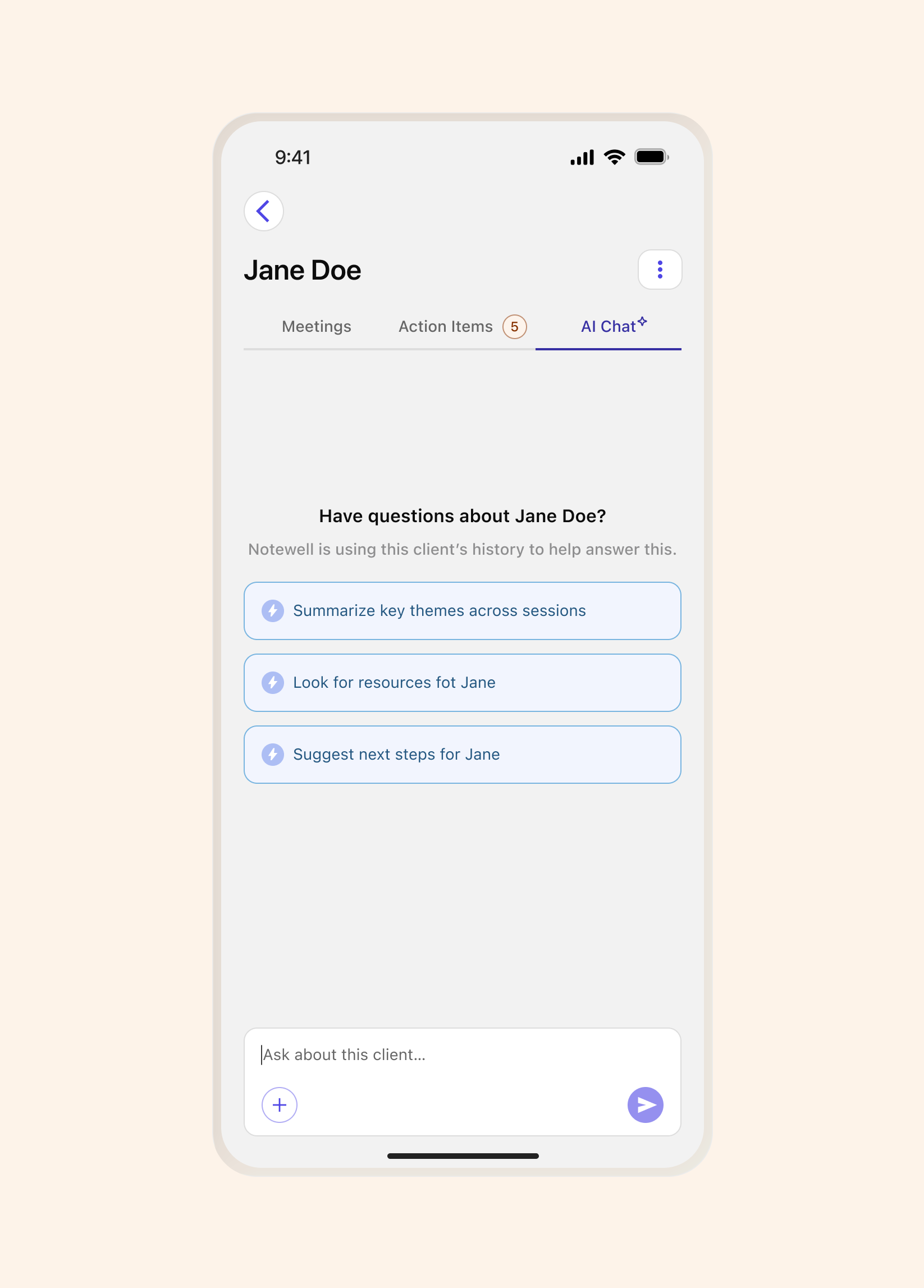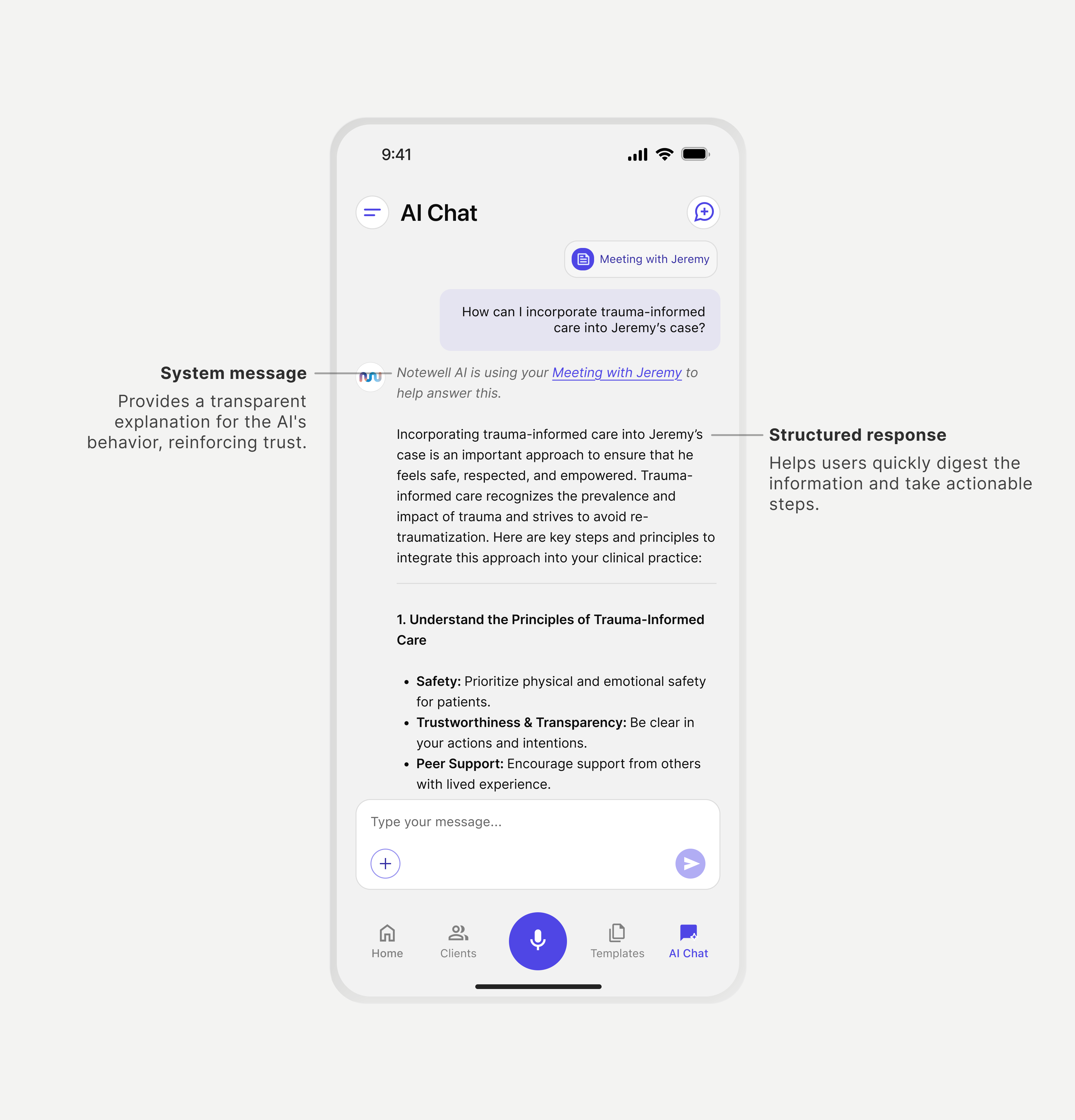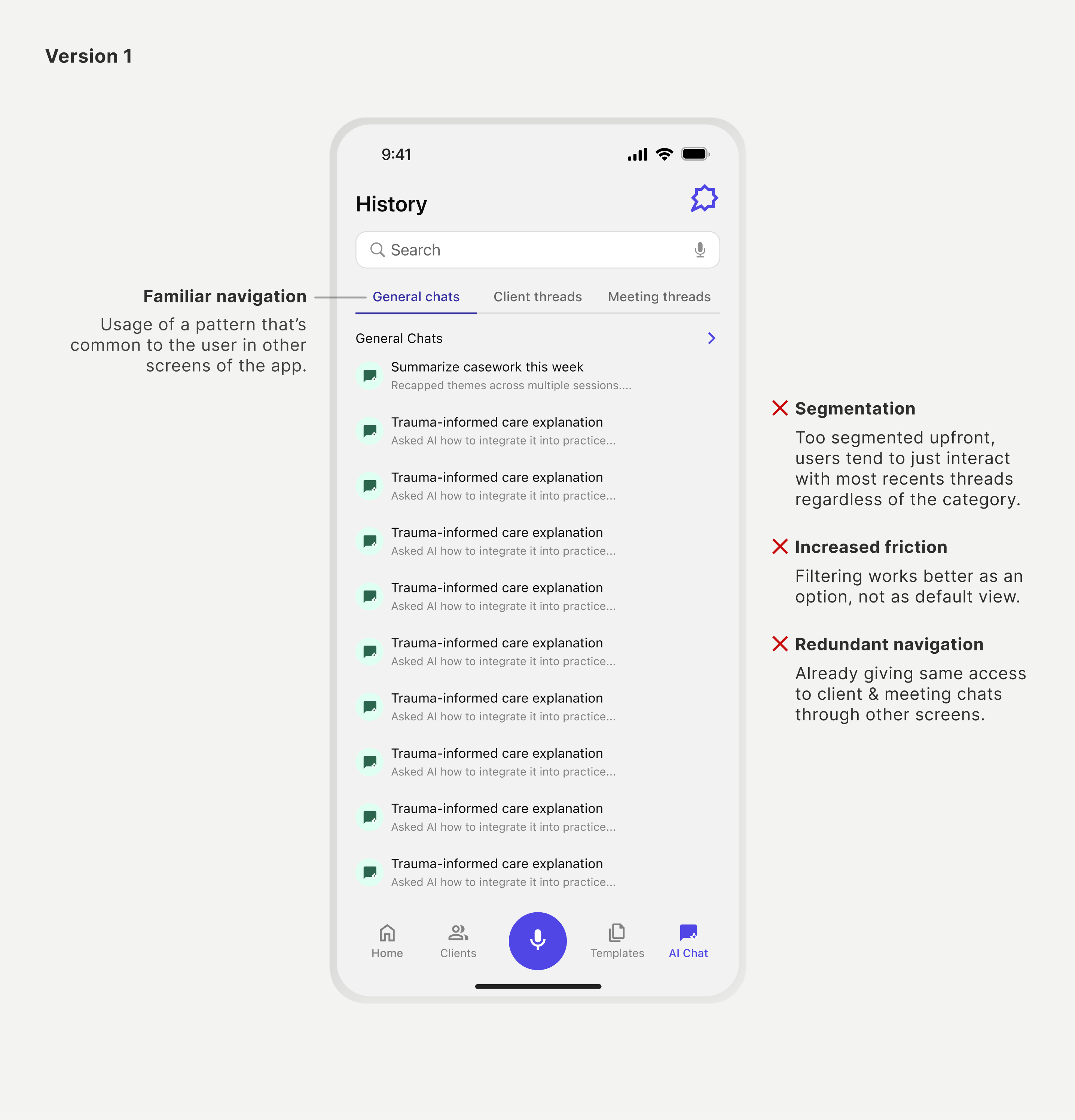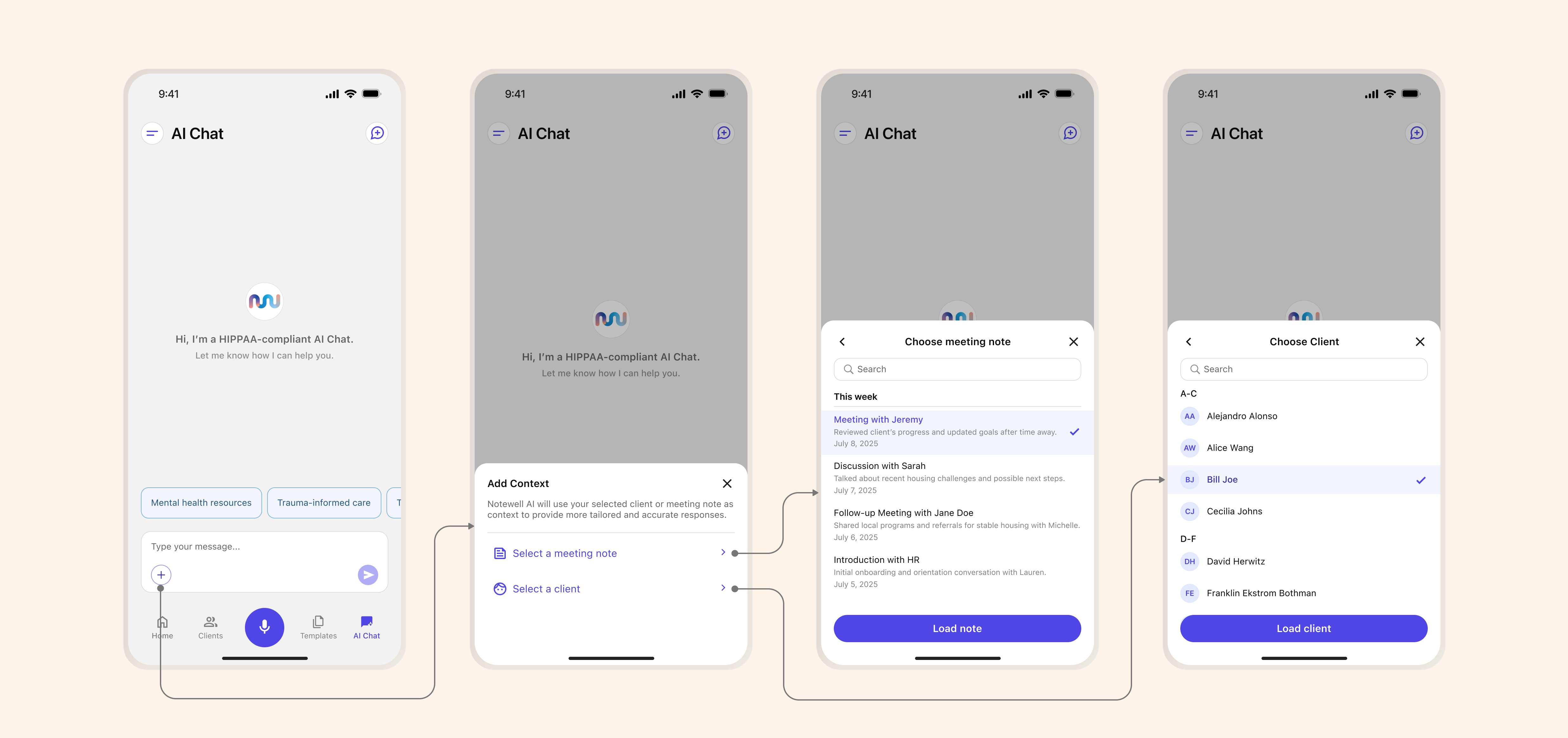DESIGN
RETHINKING THE CHAT MODEL & ENTRY POINTS
At first, AI chat worked the same everywhere, no matter where it was accessed from — always starting a new, temporary thread with no memory or link to a client or meeting. But user interviews made it clear: context was key to making AI useful.
We introduced a new chat model with three entry points, each tailored to a specific need:
- General: Accessed from the main nav. Always opens a new thread that automatically saves. Designed for quick, one-off questions.
- Client-based: Accessed from within a client profile. Threads save and are tied to the context of that specific client. Used for longitudinal questions (e.g. “What themes have come up with this client recently?”).
- Meeting-based: Accessed from a specific meeting note. Threads save and are anchored to that meeting context, ideal for quick summaries or follow-up planning.

Entry point 1: General
Best for quick questions
· Opened from the nav
· No context loaded

Entry point 2: Client
Persistent chat tied to client
· Opened from a client (Jane Doe)
· Then toggle to AI chat
· Context automatically loaded

Entry point 3: Meeting note
Anchored to a specific meeting
· Opened from a meeting note
· Then toggle to AI chat
· Context automatically loaded
INTEGRATING THE AI CHAT INTO THE WORKFLOW
The initial mobile AI chat shipped as part of our broader mobile effort, but it mirrored the desktop version’s flaws. Every request started from scratch, threads vanished on exit, and users had to reload context like meeting notes or clients manually.
Social workers found switching to a separate screen disruptive, so we redesigned the chat as a dedicated tab within client profiles and meeting notes. Anchored to its context, it let users review notes, summarize meetings, and ask follow-ups without losing their place — keeping AI seamlessly in their workflow.
Before
· AI Chat opens new screen, losing context
· Manually load context each time
· No history, threads disappear
After
· AI Chat in tabs, reference context in same screen
· Context loaded automatically
· History of chats preserved
MAKING GENERAL AI CHAT CONTEXT-AWARE
We learned through user interviews that social workers expected the AI to “know” which client or meeting they were referencing, even in general chat. Without that context, responses often felt vague or irrelevant, and adding the necessary details each time was tedious.
Contextual awareness is a core selling point for Notewell, so I designed a lightweight flow that allowed users to attach a client or meeting note before submitting a question.
The initial desktop modal-based approach felt clunky on mobile, so I proposed a bottom sheet — a more native pattern that enabled smoother, in-flow context selection. It also allowed us to scale by supporting both clients and meeting notes as context.
The solution not only improved general chat, it became the standard for adding context across the app.
DESIGNING FOR AI TRUST & CLARITY
Most social workers we spoke to had tried AI tools like ChatGPT but rarely used them for work — citing privacy concerns, vague responses, and the need to constantly re-explain context.
To build trust, we grounded the experience in clarity and transparency. A welcoming message and HIPAA-compliant badge established credibility. Prompt suggestions encouraged exploration, while contextual labels and in-line explanations made it clear how and why the AI was responding — turning an unfamiliar tool into something transparent, helpful and safe to use.



CHATS HISTORY HUB
We initially faced internal hesitation about including a centralized AI chat history. The founder felt the existing entry points — client profiles and meeting notes — were enough, and viewed general chat as a space for quick, disposable questions.
But early feedback made it clear: users wanted to revisit all conversations, including general ones.
Rather than just segmenting history by chat type — which felt clunky — we reframed the challenge: How might we surface past chats effortlessly, regardless of where they started? This led to a unified, lightweight system that felt familiar, flexible, and easy to navigate.


